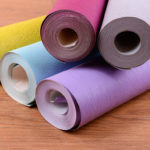In order for the end wall to be insulated correctly, it is important to take into account some technical nuances. They are well versed in those who are constantly dealing with this kind of finishing work. But for beginners, it’s sometimes difficult to figure out exactly what subtleties they will need to take into account in the process of their actions.
First of all, care should be taken to apply the necessary layer of aerated concrete. It should be at least 5 cm, because only in this case the necessary effect on the heat protection of the room is achieved.


It should be noted that facing the end wall with brick is not advisable, since it is inferior to aerated concrete in terms of thermal protection at least 3 times.
On the inside, which faces the street, the base of the wall must have a high density, as well as a low rate of vapor permeability. Therefore, modern technology involves the use of reinforced concrete. Its ideal thickness is 10 cm, and it is precisely this indicator that experienced masters strive for in their practical work.



High-quality insulation is always more in demand on the outside of the base. Finishing from the inside will not allow 100% to restrain moisture, and therefore sooner or later it will leak into the inside of the living room. And the walls will be prone to mold; black stains and molds are possible on their surface. In some situations, the formation of fungus is not excluded.
Much attention should be paid to the processing of interpanel joints. It is through these places that cold can penetrate into an apartment or private house. Also, abundant precipitation can provoke excessive exposure to the wall of moisture. And at certain points, the monolithic nature of the existing structure can “wobble”.




For waterproofing, you must choose a special film that has sufficient properties to combat moisture. The thickness of the insulating component for the end wall itself is calculated by specialists based on the specific features of the existing situation.
Ideally, these types of work involve trusted professionals who know a lot about their business. However, if the task is to insulate the front side of the building on your own, then considerable ingenuity and, if possible, use practical advice from their more experienced colleagues in practice to construction.
-
 How not to fix porcelain tiles on the walls
How not to fix porcelain tiles on the walls
-
 How to choose wallpaper for a children's room
How to choose wallpaper for a children's room
-
 In which cases linoleum should be preferred to laminate
In which cases linoleum should be preferred to laminate
-
 Why you can not put tiles on gypsum plaster
Why you can not put tiles on gypsum plaster
-
 What interior doors will last longer
What interior doors will last longer
-
 What signs indicate a fake building materials
What signs indicate a fake building materials
-
 Is it efficient to get electricity from solar panels?
Is it efficient to get electricity from solar panels?
-
 How to design a baroque interior?
How to design a baroque interior?
-
 When is it better not to glue paper wallpapers?
When is it better not to glue paper wallpapers?
-
 The better to insulate the facade of the building
The better to insulate the facade of the building
-
 How often to clean the sofa
How often to clean the sofa
-
 Types of drywall and its purpose
Types of drywall and its purpose
New publications are published daily on our channel in Yandex. Zen
Go to Yandex. Zen


